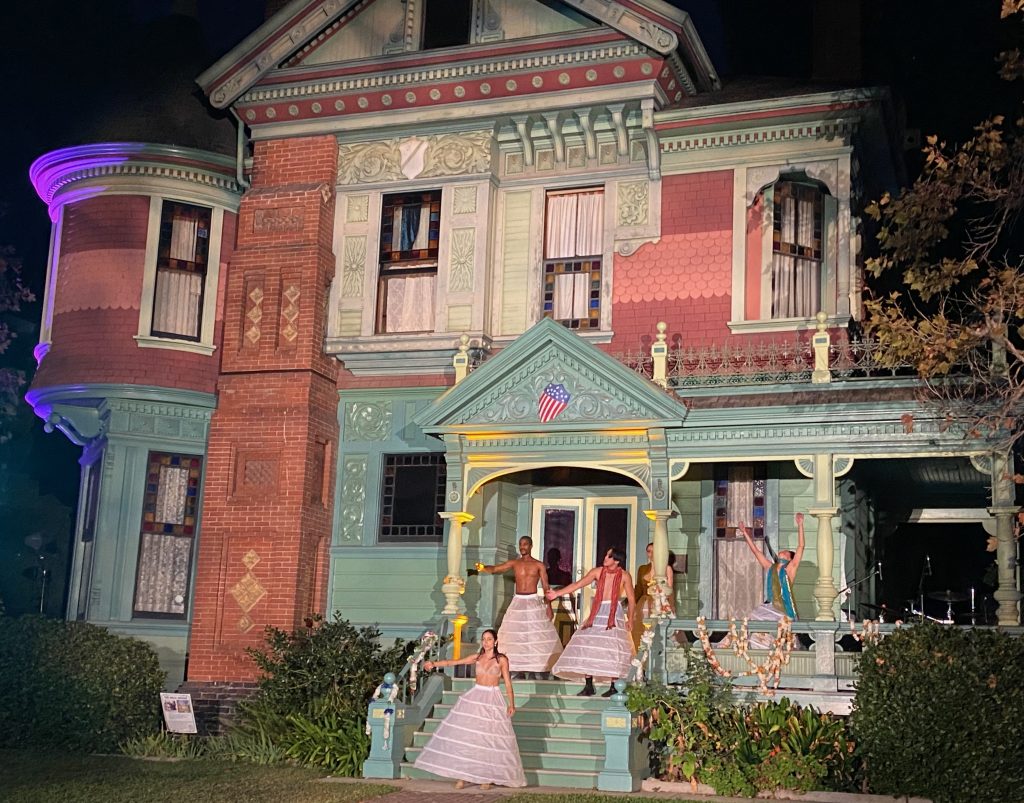
Blue13 Dance Company’s recent production, Shaadi, was a magnificent success. The immersive Bollywood dance spectacular was recently staged at L.A.’s iconic Heritage Square Museum. The assembled audience were invited to participate in and celebrate a trio of (semi) traditional Indian weddings, all staged on the private grounds and Victorian mansions found in the Montecito Heights neighborhood in Northeast Los Angeles.
The vibrant dance company is led by artistic director and choreographer Achinta S. McDaniel, who made excellent use of the historic open-air architecture museum for her site-specific and exquisitely crafted musical dance extravaganza.
Here follows my interview with Achinta S. McDaniel.
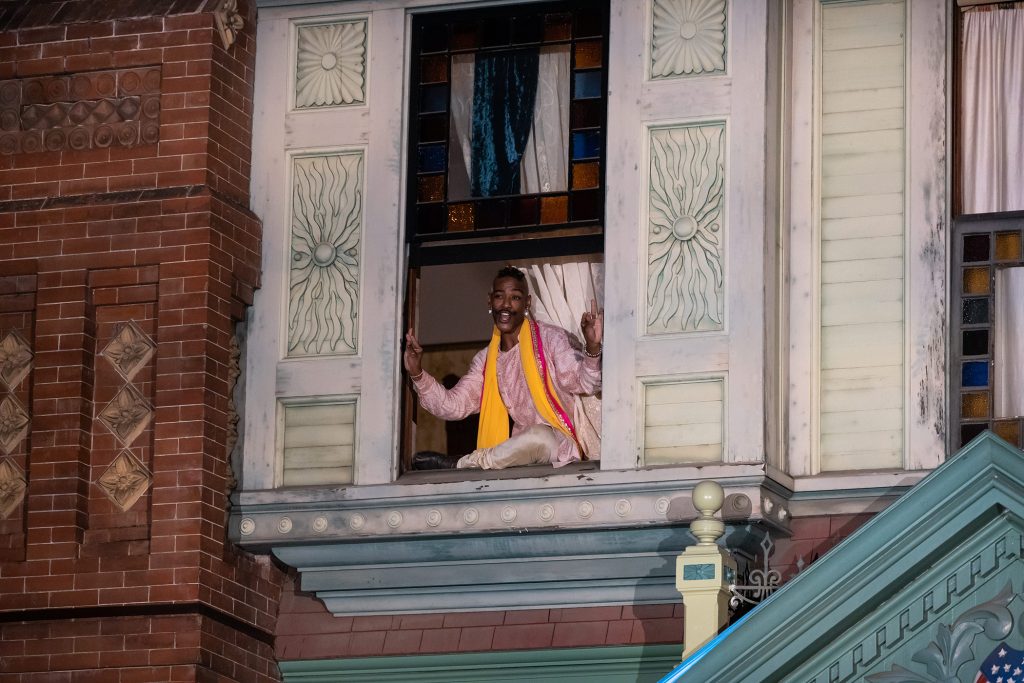
Photo by Charlie Kaine.
What was the concept for this production, from initial idea through to the main things you wanted to achieve with the show?
Achinta S. McDaniel — “The first time the idea came to me for a choose-your-own-adventure dance experience was in 2014 when we were commissioned by Grand Park and the LA/Islam Project to create a site-specific piece. What could be more exciting than to shape your own narrative and interact with performers? I really wanted to involve our communities in this special way, breaking some of the fourth wall and normative associations with dance performance. Touring and engagements continued with our other work, but this idea remained simmering in the back of my mind. About 10 years ago I moved to NELA, and I recall driving on the 110 and seeing a white spired church peeking out from behind the LA River. I was intrigued and pulled off the Avenue 43 exit to find Heritage Square Museum. It struck me as a place where Blue13 would have to eventually perform- it was so strange and spectacular, such an anomaly and such a great part of Los Angeles history. When I entered Heritage Square’s campus this past Spring to watch an outdoor opera during the pandemic, I was reminded, and as soon as I stepped foot inside the gate, Shaadi began to come to life. We hadn’t produced a full local L.A. performance in years, and the pandemic allowed us the time and freedom to do so. Heritage Square gave us the space to make it happen.”
What kinds of dance styles were used for the choreography — I saw Bollywood gestures as well as breakdancing, modern dance — more specifically, how does the choreography shape the characters and the story?
“Bollywood, Bhangra, hip hop, contemporary, ballet, jazz, Kathak are all utilized in the piece. We want the story of the neighborhood planning a wedding to be brought to life through dance and music and theatre. We reveal the multiplicity and richness of the neighbors, glimpses into their secrets, backstories, and invite the audience to experience their joy and sorrows, all within a contemporary American arc of movement, which of course includes diverse stories and dance forms.”
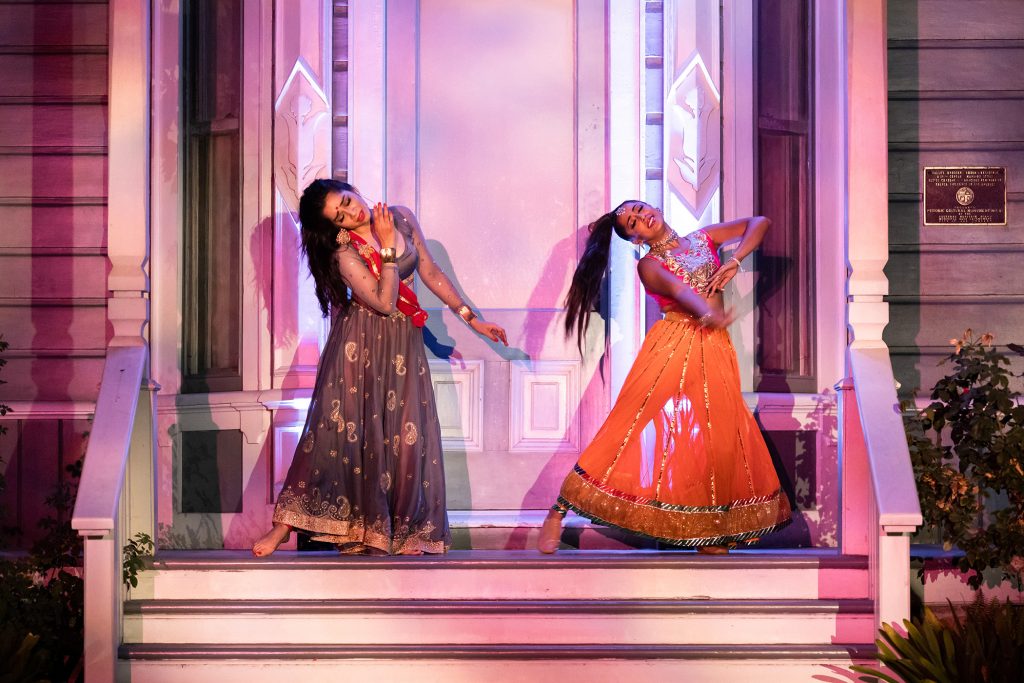
Photo by Charlie Kaine.
I noticed a rival ex storyline but I had difficulty tracking it — what is the general plot / story arc of the dance?
“I like to bring the audience on a journey with us, but especially with an immersive show like this, I cannot and do not want or expect them to realize all storylines. An audience member might track one dancer throughout, or follow one or two of the characters. I love the idea that different people will experience different narratives during the course of the Shaadi experience, that they might engage in dialogue at the closing reception or later with friends and compare experience points.
“To sum up, like a good Hindi movie, there are love stories, backstories, subplots, and villains: We have three “brides” played by Joya Kazi, Alisa Carreras, and Svetlana Tulasi. Joya, “Indira” in the show, and her groom Sharan (Kirby Harrell) get engaged in the first scene. We see Svetlana (“Kaira who Pines”) broken-hearted at the site of this. As the audience, we may question “is she in love with Kirby?” We also reveal Alisa as the love interest of neighborhood bad boy “Duke the Rascal” played by Robert Gomez. All the women and men of the village twitter about him as the most masculine, cocky, and popular guy in town. Alisa’s character Nilli is not interested but ends up agreeing to be his as pressured by her family and friends. As the evening progresses, Joya and Kirby fall deeper in love and relish in their joy, ending in their wedding ceremony. In the meantime, we realize that Nilli and her childhood best friend, “Bansi”, played by Jacquelyn Buckmaster-Wright are, in fact, in love. We see a very intimate and sensual duet take place in the garden between the two womens’ homes, revealing this secret hidden from the neighbors. The end of the piece is the surprise ending in the church, in which Bansi stops the wedding of Duke and Nilli, and the two women end up together. The rousing finale set outside the church reveals that all is not lost for Kaira, who pined so for Sharan at the beginning of the story. Duke the Rascal and she seem to hit it off and the spark of a flirtation is lit. All three couples celebrate with the neighborhood and guests (our audience) to finish the story with a true Bollywood happy ending.”
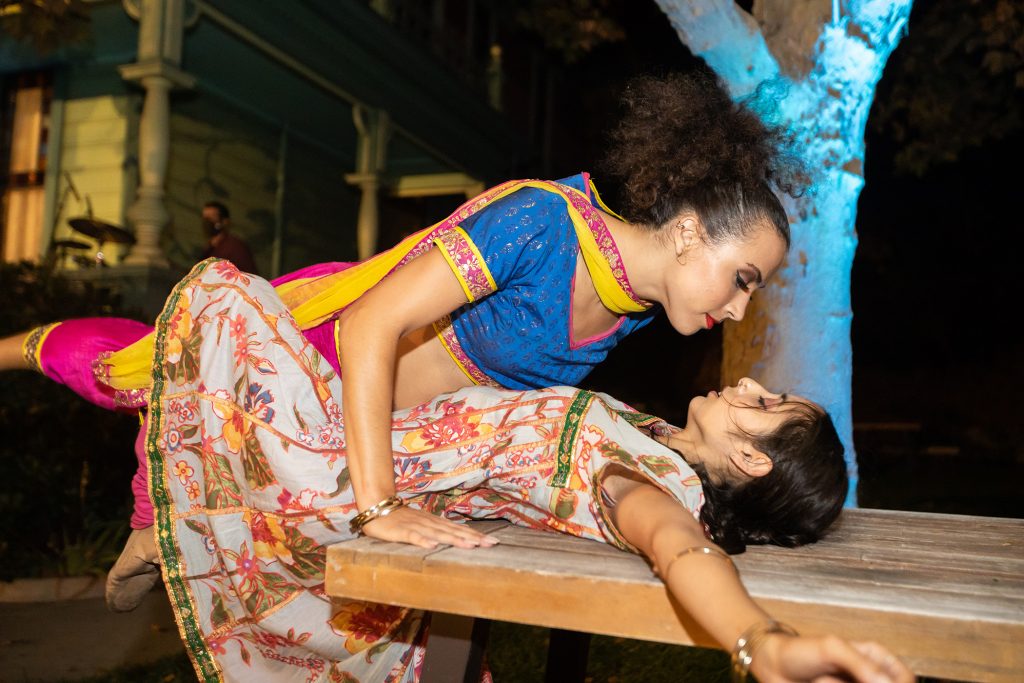
Photo by Charlie Kaine.
To what extent were you able to incorporate the site into your staging and story? Any restrictions or limitations?
“The site is paramount to the story. We created the piece specifically for Heritage Square—we wanted to entice the guests to see the juxtaposition between a bright, beautiful presentation of self for a wedding as contrasted with the secrets and longings that occur behind closed doors. Heritage Square really inspired that idea, whether we are voyeurs from the street level peeking through the curtains of one house to being entrenched in a duet in a parlor of another. We did have to, of course, realize these are 19th century structures, and to take great care of them and to respect the space. Some of the spaces are being restored. Some of the furniture is also from that era, and so on. My favorite moments include the opening with Kirby surprising us from the 2nd floor window of Hale House, and again positioning our violinist, Alma Cielo, on the balcony of Perry House to play during the women’s intimate duet. Heritage Square really provided such a wonderful playground to realize this world premiere, and to give us the setting for Blue13’s first immersive experience at this level. We would love to continue to make work there. The exciting thing is that different structures will be open or closed depending on restorations and repairs as time goes on, so it can be completely different every time we revisit the site.”
Interview with Achinta S. McDaniel.
To read my review of Shaadi, please go here.


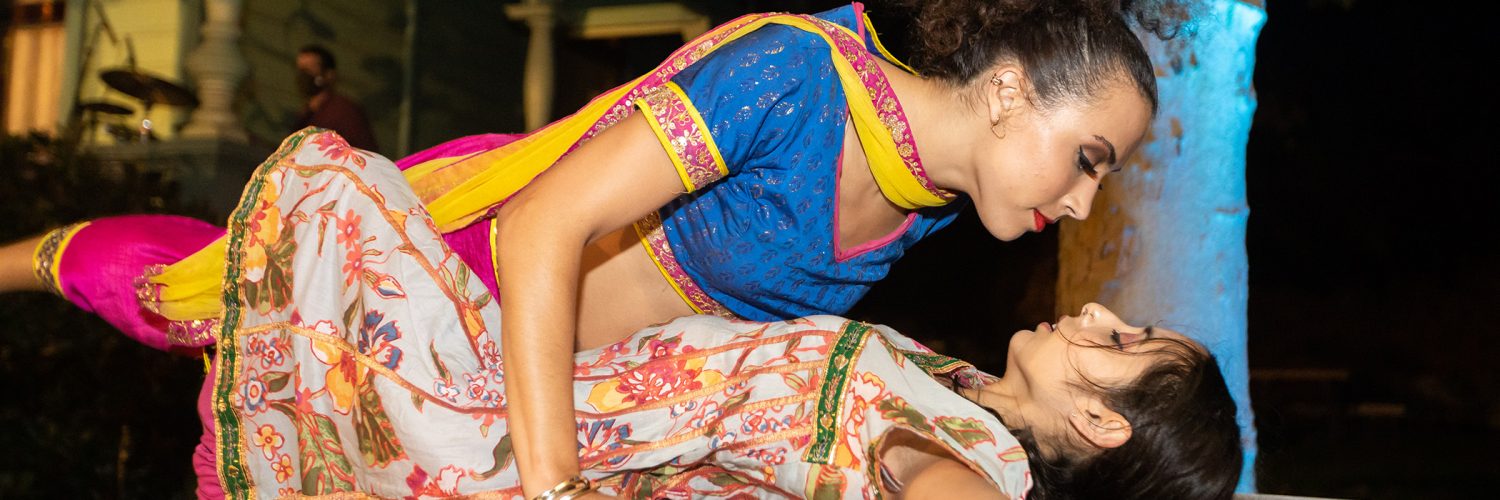





[…] read my interview with Blue13 Dance Company’s artistic director and choreographer Achinta S. McDaniel, please go […]